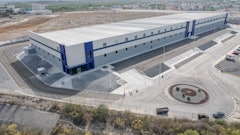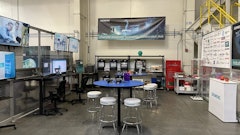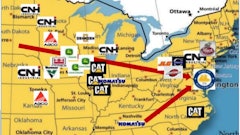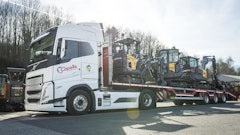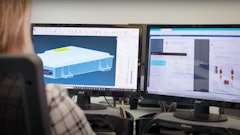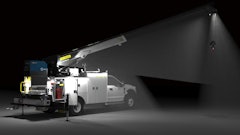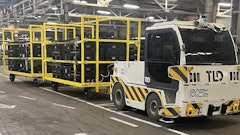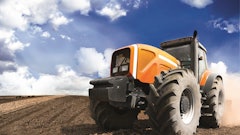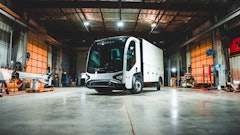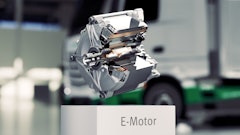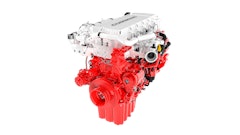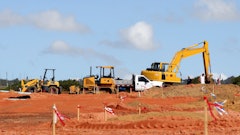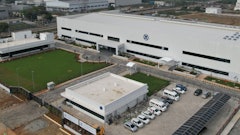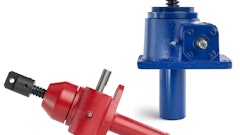
Five Potain tower cranes and a Manitowoc crawler crane will spend the next four years working in a contaminated zone to build a huge containment shelter at the Chernobyl nuclear power plant. The New Safe Confinement project involves building a shell measuring 257 m wide by 110 m tall that will encase the radioactive remains of Reactor Number 4, the scene of the infamous disaster site in 1986.
The cranes include four MR 605 B H32 luffing-jib cranes and an MD 345 B L12 from Potain, plus a Manitowoc 2250 crawler crane. All are working eight hours a day to lift metal structures that weigh up to 16 t to create the 29,000 t arch-shaped structure. Novarka, a joint venture between Bouygues TP and Vinci Grands Projets, owns all the cranes.
Jean-Claude Guiter, Key Accounts Director at Manitowoc, says the project is unlike anything the company has worked on before.
“Twenty-six years since the Chernobyl tragedy gripped the world, we are embarking on a unique engineering project that tests man and machine to the limit,” he says. “The dangers of working in a radioactive job site mean that attention to detail is crucial. We are confident that the cranes, closely supported by our Manitowoc Crane Care engineers, will complete this unique project safely and on schedule.”
Because the immediate vicinity of Reactor Number 4 still has high levels of radioactivity, the giant New Safe Confinement structure is being built 180 m away and will then be slid on tracks into its final position.
Understandably, safety is a huge priority on the job site, particularly with regard to the welfare of the 300-strong workforce. There are strict limits on how long workers can spend on the job site. These restrictions mean that even assembling the four tower cranes and one crawler crane was a six-month task.
Before entering the job site, all workers must complete a comprehensive training program and pass strict health checks. Once on site, they must wear a full-body suit and breathing apparatus plus a dosimeter, which measures levels of radioactivity exposure. If a person reaches 14 millisieverts of radiation in a year, they are prevented from further work at the site.
Personnel protection naturally extends to the cranes and all the cabs have been reinforced and fitted with lead protection for work on the project. In addition, operators have shorter shifts to minimize time spent in the danger area. The cranes can also be controlled remotely with operators relying on video cameras fitted to each crane.
With time limits on shifts yet pressure to build the structure as quickly as possible, Novarka opted for luffing jib cranes as several can work in close proximity. Additionally, the JV elected to have four cranes of the same model to ensure consistency in operations and familiarity among the operators.
The MR 605 B H32 is Potain’s largest luffing-jib crane. It offers a 32 t maximum capacity and 60 m working radius. Manitowoc’s 2250 is a 272 t capacity crawler crane.
This is not the first time that Manitowoc cranes have worked on the Chernobyl site. Back in 2005, a Potain MD 3200 special application crane was used to reinforce the roof of Reactor Number 4. For that project, work finished in December 2006.
Ground preparation on the latest project began in 2011 and the New Safe Confinement is expected to be in position over Reactor Number 4 by 2015. It should contain radiation at the site for the next 100 years.



